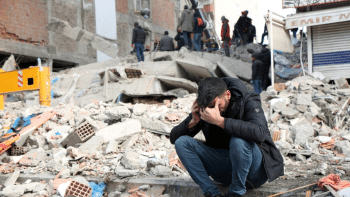A big earthquake may no longer be a distant risk

Every time we have a tremor that jolts us like the one on December 2 (which had a magnitude of 5.6), we have reports on how unprepared we are to cope with a major earthquake, as has been predicted. In fact, this year Bangladesh experienced almost 100 quakes, most of them minor jolts with 3.0 to 4.5 magnitude and five of them of 5 magnitude or above. The latest one was the biggest in 25 years. Dhaka is close to a geological fault line, and being so densely populated with unplanned construction almost everywhere, it is likely to face catastrophic consequences if hit by a major earthquake.
A researcher of Dhaka University has told this paper that a mega shock of more than 8 magnitude is almost inevitable. He has urged the government to initiate short-term programmes to educate the public on how to survive an earthquake and lower the damage during a convulsion. The government should take such cautions and suggestions seriously, and take steps accordingly. These should include funding first responder teams, mobilising volunteers trained to assist in rescue efforts, and equipping the Fire Service with the required machinery and skilled human resources to carry out operations in the event of an earthquake.
At the same time, Rajuk must take steps to ensure that buildings that are at risk of collapsing are vacated and demolished or retrofitted to make them safe. According to a Prothom Alo report in April, Rajuk had identified 42 highly risky buildings under its jurisdiction with 23 in Dhaka, three in Gazipur, six in Savar, eight in Narayanganj and one in Keraniganj. But only one has been demolished. Who will take the initiative to demolish the remaining buildings? And why has Rajuk not published the list of risky buildings which could have raised awareness?
Rajuk also cannot shrug off the responsibility for enforcing building codes to ensure buildings are resistant to earthquakes and have required safety structures, such as fire exits. Unfortunately, over the years, we've seen indiscriminate urbanisation with buildings being constructed in every space available, defying the codes and creating congestion, sometimes even blocking exit-entry routes. Bangladesh is known for its efficient disaster preparedness when it comes to cyclones and floods. The same level of strategic planning is required for earthquake-prone areas, especially Dhaka.
The government must consider these realities and develop emergency response strategies involving local communities and the various organisations involved. It must also rigorously enforce building codes and demolish all risky buildings if they cannot be saved through retrofitting. It is almost impossible to predict an earthquake, which makes it all the more crucial to be prepared for one at any time.


 For all latest news, follow The Daily Star's Google News channel.
For all latest news, follow The Daily Star's Google News channel. 











Comments